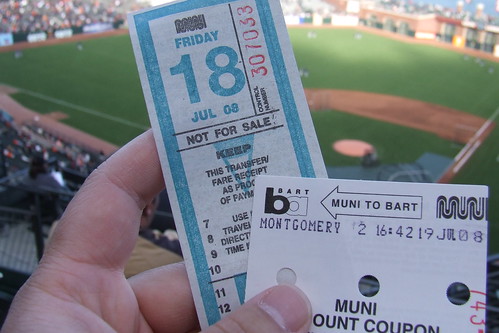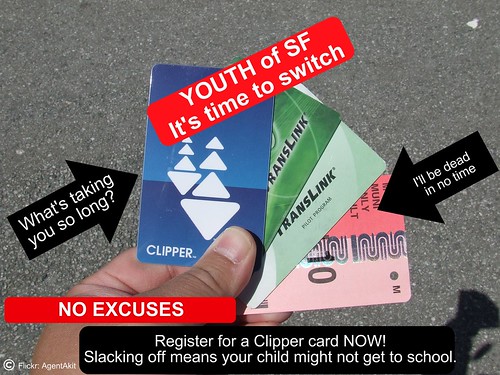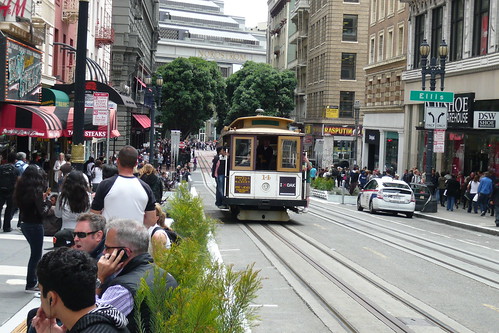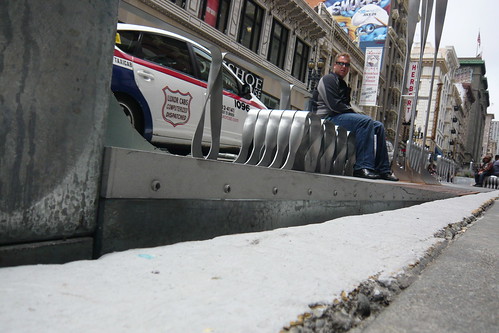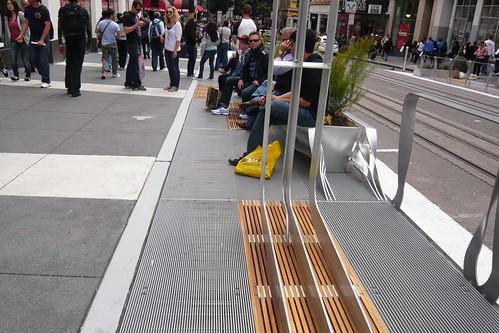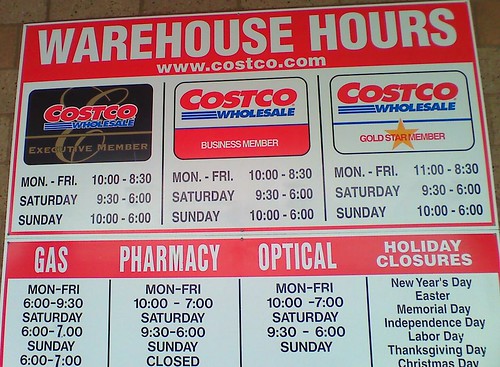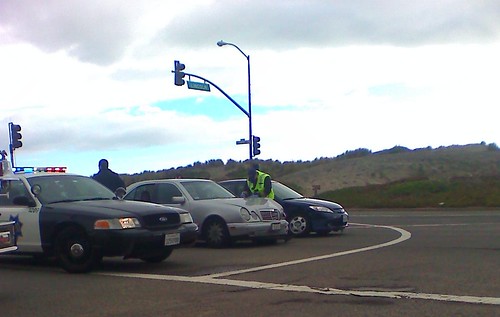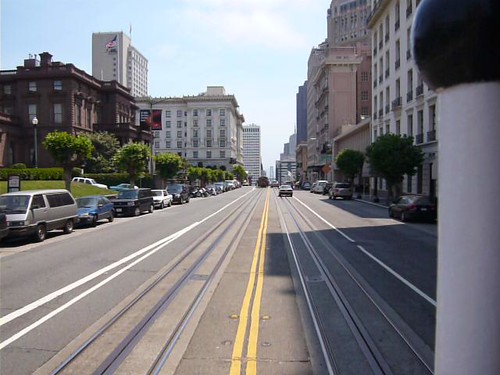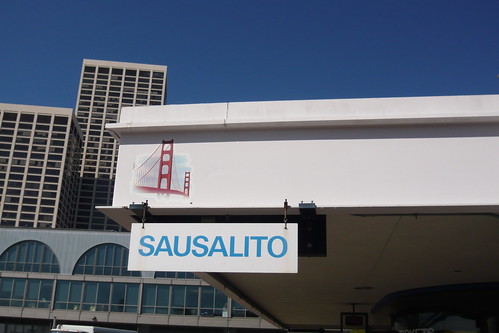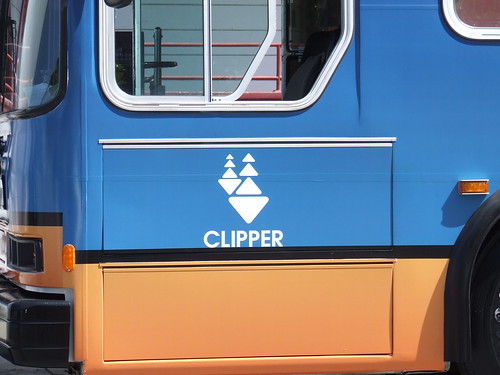Well, there has to be a solution, and I thought of one as I left it in the comments. Soon enough, I learned my fellow blogger, John Murphy, beat me to the punch. While we have the same exact goals, our views on how to implement it is slightly different.
Here's my take on ending 8-ride tickets:
8-ride tickets has been a staple on Caltrain for a long time. It used to be 10-rides until the validation machines at Caltrain stations kept malfunctioning. The tickets had a few basic rules, including an expiration date for use, and any passenger needing to travel further than what's listed on the 8-ride can pay for a zone upgrade ticket.
Not long ago, Caltrain switched from paper 8-rides to Clipper only and it came with some mixed fanfare. The rules of the program had to change because of the way Clipper operated. What was kept was the expiration rules, but the zone upgrade was not available anymore, thereby passengers wanting to go further had to buy an additional 8-ride to their Clipper card or just buy a one-way ticket at the non-discounted (regular) price.
I wrote on my blog about how to properly use it, taking more of Caltrain's side to say that as long as what's out there, follow the rules; that turned-out ugly when Caltrain's web geeks decided to link my blog to their website and I had a flurry of mean spirited commentary on my blog. I felt like I was a puppet spokesperson for Caltrain.
That was not a great move for me. Sure, that added some more ad revenue and fans flocking to my blog. I realized there's a more critical problem with Caltrain and Clipper, 8-rides is just pointless.
My solution:
End 8-rides on Clipper and give everyone an across the board 15% discount by using the universal e-cash fund.
If you ever cracked the numbers on how much an 8-ride can save passengers, the amount is 15% (give or take around 0.1%).
This process would be very simple. Everyone can use e-cash which is like having cash in your wallet to pay for any transit rides you want. Passengers tag-on at their starting point, and tag-off resulting in being charged at 15% off the one-way cash fare.
This makes it simple and clean. No worries about not having enough 8-rides, no worries about last minute zone switching because your significant other wants to meet you at the mall, or you forgot to grab groceries before heading home.
One Transit Agency Did it a Long Time Ago
Golden Gate Transit and Ferry was one of the first transit agencies to adopt TransLink (old name prior to the switch to the newer "Clipper" branding).
Back in the days, Golden Gate had two options for passengers to pay their fare, pay in cash for a one-way ride, or pre-purchase frequent commuter ticket books. The commuter books are very similar to Caltrain's 8-ride tickets because using them came with a discount and had an expiration date. Since Golden Gate's commuter ticket books was zone specific, they had to print multiple types of zone books on a frequent basis to cover all six zones; and that meant a lot of money being wasted.
When TransLink came around, the agency thought smart: Instead of having TransLink sell electronic versions of the zone books and follow the same rules as they had before about usage (including expiration date), they decided to go with the e-cash only route.
Golden Gate Transit and Ferry went with this great offer: Use the TransLink card, and regardless if you ride it daily or just once a year, every card user will pay less and there's no need to purchase e-ride books. This meant all Golden Gate Transit riders gets 20% off (10% on Marin Transit), and Ferry passengers receives a discount ranging from 40 to 50% off.
What Golden Gate did was a bold move, but it made it much simpler for passengers by just asking all passengers to have ample e-cash on their account, and just tag-on and off to be charged the appropriate one-way fare with the commuter discount savings. This helped passengers who decides to exit the bus early or take a longer trip; this also helps with reducing the complaint loads on customer service; unlike how Caltrain's implementation caused a very high number of complaint calls.
How Does the Caltrain Idea Compare to John Murphy's?
His idea is to have a separate e-cash fund known as "Caltrain Cash" which is the only way to receive the across the board discounts for Caltrain. Using regular e-cash would result in paying the regular one-way fare.
The C-Cash fund would be similar to what BART offers, for those wanting high value discount tickets (prepay a high amount to BART and get a 6.25% bonus), it would be designated in a separate fund on your Clipper card and can't be shared between other agencies. Having a separate fund pool means that transit agencies can earn interest on the extra cash (known as the "float") in a savings account. BART is known to make money off the "float" from the residual tickets thrown in the trash (a.k.a. "tiny tickets") and now they can also get "float" from the Clipper card users who have remaining HVD balances on their card.
While agencies can benefit from the "float," that just makes it more complicated for passengers. These days, people wants it to be easy to ride transit without buying separate e-tickets and e-passes and other garbage to make the program complex. Clipper's universal e-cash fund is the easiest way to ride public transit because it's accepted on all transit agencies and Golden Gate Transit didn't want to make their Clipper system complex and just gave across the board discounts to all card users.
Basically, in comparison:
- I want Caltrain to only accept e-cash and give a 15% discount to Caltrain passengers.
- John wants Caltrain to have a separate cash fund that will give 15% discount to Caltrain passengers.
While I'm on the topic of Caltrain, I'm not sure how to eliminate the monthly passes. E-cash paying only with the 15% discount may not give the appropriate discount necessary because people could ride Caltrain just twice a day on weekdays only, or ride multiple times per day every single day.
A possible option is to go with the pass accumulator. This means a passenger just needs to fund their Clipper card with e-cash and when it reaches a certain threshold within a specific time period, a pass is "earned" and future rides during that time period is free. This would end the multiple choices to purchase monthly passes, whether it be online, at a retailer, or an automated machine.
This option would work well for agencies like Muni, but for Caltrain operating a zone system, this would be really complicated on how to calculate a passenger's travels to 'earn' the pass.
Until Caltrain Kills the 8-Ride Tickets...
Do not register for Clipper's autoload program or the automatic loading through commuter benefit agencies.
If autoload screws up and it wasn't your fault (say your credit card charge was denied), your card is blocked from future Clipper usage until it's cleared-up with customer service. That may take days for the card to be unblocked.
If the automatic loading from commuter benefits doesn't happen on-time, you are left out in the cold with no Caltrain pass or 8-rides to cover your journey. That could mean attempting to ride for free and risking a court visit for fare evasion, or paying cash for a regular one-way ticket.
The easy solution is to use in-person vendors, transit agency ticketing offices, self-service machines, or Clipper customer service locations at Embarcadero station and the Ferry Building. By using one of these options, you get your pass, e-cash, or 8-rides INSTANTLY on the card and available for immediate usage. This beats ordering online because it can take up to 5-days for it to be loaded onto the card.
Here's two video examples I produced of how to use a self-service machine:
For commuter benefits, ask your employer or use the benefit agency's website to modify your ordering from automatic loading to one of these choices:
- Ask for a paper voucher. They are accepted at Walgreens, Clipper customer service, and transit agency ticketing offices.
- Ask for a debit card. They are accepted at all self-service machines (such as all Muni metro stations), Clipper customer service, and some transit agency ticketing offices.
